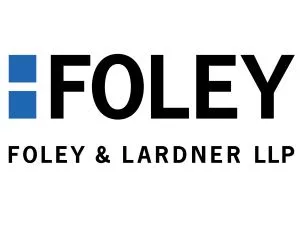- within Government, Public Sector, Insurance and Coronavirus (COVID-19) topic(s)
In China, there are an overwhelming number of measures to govern almost all aspects of the process of manufacturing a product, bringing that product to market, and maintaining that product's integrity and competitiveness in the marketplace. However, the application of these laws varies significantly across agencies, subject matters and internal jurisdictions.
In December 2014, just looking at the areas of product stewardship and sustainability, China issued roughly sixty laws or other regulatory measures. These provisions address a variety of specific issues, including the following:
- Environmental investigation assessment
- Environmental noise control
- Chlorofluorocarbon production quotas
- E-commerce product quality
- Volatile organic compounds in the petrochemical industry
- Dangerous chemical operational licenses
- Waste electrical and electronic product dismantling operations
- Occupational disease prevention and safe production
Clearly there are numerous regulatory areas that will continue to be active for manufacturers working in or with China in the coming months. However, more broadly than just product stewardship and sustainability, the following areas will figure prominently in regulatory trends and issues for such manufacturers in 2015.
Buy China. The "Buy China" term refers to a host of measures, not procurement related, that encourage the enhancement, securing or prioritization of China-based or China-original manufacturer innovation and success. The key to understanding whether a particular measure falls into this category is not the actual text of the measure but how the measure is applied in practice by national or local government authorities. The China Food and Drug Administration Notice Regarding the Issuance of Special Examination and Approval Procedures for Innovative Medical Products (Trial) potentially falls into the "Buy China" category. Medical device manufacturers should monitor the application of this notice, which was issued February 7, 2014 and became effective March 1, 2014.
Environmental Liability. China has intensified efforts to strengthen the legal framework supporting increased manufacturer liability for environmental harms. China's amended Environmental Protection Law took effect on January 1, 2015. Early signs indicate that government authorities are ramping up environmental enforcement. For example, manufacturer feedback to us confirms intensified enforcement. These signs also include Ministry of Environmental Protection regulatory measures, which also took effect on January 1, 2015, such as the following:
- Measures of the Environmental Protection Administrative Department on Implementing Continuous Daily Penalties
- Measures of the Environmental Protection Administrative Department on [Property] Seizure and Detention
- Measures of the Environmental Protection Administrative Department on Production Restrictions and Suspensions for Rectification
- Measures on Environmental Accident Investigation and Treatment
- Measures on Enterprise and Entity Environmental Information Disclosure
Data Privacy and Security. A significant number of recent developments in data privacy and security may affect manufacturers and other entities handling various classes of data. There appears to be a trend toward measures reinforcing data control and localization. Recent examples include draft amendments to the Criminal Law. Draft Article 16 criminalizes activities such as illegally obtaining citizens' personal information through theft or other means. Draft Article 16 also covers illegally selling citizens' personal information without consent. Penalties include imprisonment for serious cases.
Further, on the national security side of things, China also recently announced a draft Anti-Terrorism Law, which includes proposed Article 15. Proposed Article 15 essentially provides, in pertinent part, that all telecommunications and Internet businesses within China locate equipment and store related user data within China. China's Ministry of Industry and Information Technology also issued new Guidelines for Establishment of Enterprise Chief Information Officers on December 5, 2014.
Product Content/Hazardous Substances. This likely area of regulatory developments for 2015 particularly affects manufacturers of electrical and electronic products. Electrical and electronics manufacturers are likely familiar with the European "Restriction of Hazardous Substances" ("RoHS") Directive. China's own law governing such substances in electrical and electronic products ("China RoHS") has been in place since 2006. An amendment to the China RoHS framework regulation, which proposes expanded regulatory scope, has been in the works for a number of years. But the authorities at the Ministry of Industry and Information Technology hope to release the amendment this year. Further, a new labeling and information disclosure standard applicable to products within scope of China RoHS, entitled "Marking for the Restricted Use of Hazardous Substances in Electronic and Electrical Products (SJ/T 11364-2014)," which has an effective date of January 1, 2015 (subject to related guidance). Further guidance on the implementation of this standard, and on the China RoHS framework regulation, is also expected.
* * *
Predicting the effects of regulation in China is difficult. One must look, beyond the content of a law or regulatory measure, to the enforcing agency, subject matter, and jurisdiction. Many Chinese regulations potentially impact manufacturers of all kinds, so manufacturers with business in China should monitor the dynamic regulatory environment. Buy China, environmental liability, data privacy and security, and product content are areas that may be particularly hot in 2015.
The content of this article is intended to provide a general guide to the subject matter. Specialist advice should be sought about your specific circumstances.


